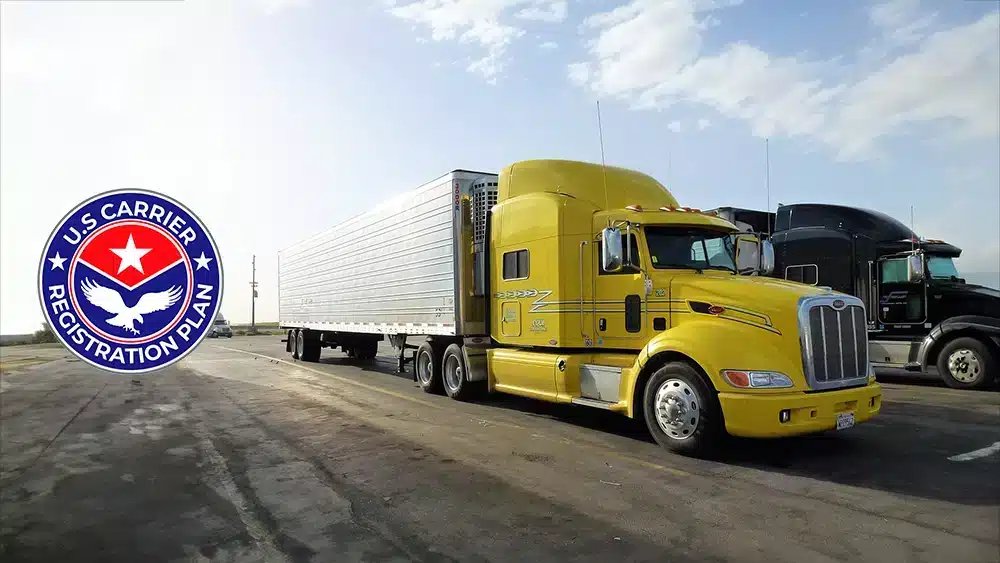The United States Department of Transportation (USDOT) is responsible for keeping our roads safe. They have certain rules called the Federal Motor Carrier Safety Regulations (FMCSRs) that apply to truck drivers who work across states. One important rule is about keeping a Driver Qualification File. In this article, we will talk about who needs this file and why it is important.
2024 Who Needs a USDOT Driver Qualification File?
The USDOT Driver Qualification File is essential for CMV drivers who fall into specific categories. Let’s take a closer look at these categories:
- Commercial Driver’s License (CDL) Holders: If you possess a CDL, you are required to maintain a Driver Qualification File. The CDL is a specialized license obtained by individuals who wish to operate commercial vehicles. Since CDL holders typically operate larger vehicles with more significant responsibilities, the USDOT mandates that they have a comprehensive record of their qualifications.
- Vehicles with a Gross Vehicle Weight Rating (GVWR) or Gross Combination Weight Rating (GCWR) of 10,001 pounds or more: If you operate a CMV with a GVWR or GCWR exceeding 10,001 pounds, you must maintain a Driver Qualification File. This weight rating includes the combined weight of the vehicle and any towed units. Such vehicles often include large trucks, buses, and other heavy-duty commercial vehicles.
- Hazardous Materials Transporters: Drivers who transport hazardous materials in quantities requiring placarding must also maintain a Driver Qualification File. Given the potential risks involved in transporting hazardous materials, it is crucial to ensure that drivers possess the necessary qualifications and certifications for handling such substances safely.
- Passenger Carriers: If you drive a vehicle designed to transport more than 15 passengers (including the driver) for compensation or nine or more passengers (including the driver) for non-compensation purposes, you need a Driver Qualification File. Passenger carriers, such as buses or shuttles, carry a higher level of responsibility for passenger safety, making it necessary to document their qualifications and compliance.
Why Does the Driver Qualification File Matter?
The Driver Qualification File is a detailed record of a driver’s qualifications and compliance with the FMCSA regulations. By keeping these files, trucking companies and the USDOT can make sure of the following:
- Driver Competency: The Driver Qualification File verifies a driver’s qualifications, including driving experience, training, and licensing. It helps ensure that drivers have the necessary skills and knowledge to operate CMVs safely.
- Medical Fitness: The file contains a driver’s medical examination certificate, ensuring that they meet the required physical and mental standards for driving CMVs. Regular medical examinations help identify any health conditions that may affect a driver’s ability to safely operate a vehicle.
- Compliance with Regulations: The Driver Qualification File includes records of annual reviews, drug and alcohol testing results, and any violations or accidents. This documentation allows motor carriers and the USDOT to monitor driver compliance with FMCSA regulations and take appropriate actions if needed.
Conclusion
The USDOT Driver Qualification File is an important requirement for truck drivers who work across states. By keeping these files, trucking companies and the USDOT can make sure drivers are qualified, medically fit, and following the FMCSA rules. Whether it’s CDL holders, drivers of big trucks, hazardous materials transporters, or passenger carriers, having accurate and up-to-date Driver Qualification Files is crucial for road safety.
FAQs
A USDOT Driver Qualification File is a collection of documents and records that must be maintained by commercial motor vehicle (CMV) drivers who operate in interstate commerce and are subject to the Federal Motor Carrier Safety Regulations (FMCSRs) enforced by the Federal Motor Carrier Safety Administration (FMCSA). It includes information such as the driver’s application, motor vehicle record, medical examination certificate, annual review of driving record, and other relevant documents to ensure the driver’s qualifications and compliance with FMCSA regulations.
The requirement for a USDOT Driver Qualification File applies to the following categories of CMV drivers: Commercial Driver’s License (CDL) holders. Drivers operating vehicles with a Gross Vehicle Weight Rating (GVWR) or Gross Combination Weight Rating (GCWR) of 10,001 pounds or more. Hazardous materials transporters. Drivers of vehicles designed to transport more than 15 passengers (including the driver) for compensation or nine or more passengers (including the driver) for non-compensation purposes.
The Driver Qualification File serves several important purposes. Verification of driver qualifications ensures that drivers have the necessary qualifications, including driving experience, training, and licensing, to safely operate CMVs. The medical fitness assessment file includes a driver’s medical examination certificate, confirming their physical and mental fitness to drive CMVs. Regular medical examinations help identify any health conditions that may affect a driver’s ability to safely operate a vehicle. Compliance with regulations, The file contains records of annual reviews, drug and alcohol testing results, and any violations or accidents. This documentation allows motor carriers and the USDOT to monitor driver compliance with FMCSA regulations and take appropriate actions if needed.
Yes, non-compliance with FMCSA regulations, including failure to maintain a proper Driver Qualification File, can result in penalties for both the driver and the motor carrier. Penalties may include fines, suspension of operating authority, or even disqualification of the driver from operating CMVs.
The motor carrier employing the driver is responsible for maintaining the Driver Qualification File. It should be kept in a secure location and be easily accessible for inspection by authorized personnel, such as FMCSA officials or auditors. The file should be regularly updated and contain accurate and complete records pertaining to the driver’s qualifications and compliance.

